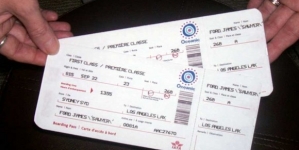-
Tips for becoming a good boxer - November 6, 2020
-
7 expert tips for making your hens night a memorable one - November 6, 2020
-
5 reasons to host your Christmas party on a cruise boat - November 6, 2020
-
What to do when you’re charged with a crime - November 6, 2020
-
Should you get one or multiple dogs? Here’s all you need to know - November 3, 2020
-
A Guide: How to Build Your Very Own Magic Mirror - February 14, 2019
-
Our Top Inspirational Baseball Stars - November 24, 2018
-
Five Tech Tools That Will Help You Turn Your Blog into a Business - November 24, 2018
-
How to Indulge on Vacation without Expanding Your Waist - November 9, 2018
-
5 Strategies for Businesses to Appeal to Today’s Increasingly Mobile-Crazed Customers - November 9, 2018
How to Win an Audience Over in the First Five Minutes
Research says the average human attention span is eight seconds. When you’re addressing an audience for a longer duration, you often get plenty of eight seconds during the course of your speech.
Advertisement
The only issue is that that does not guarantee anything. Someone can listen to you all day and still not feel convinced. However, there are things you have to do to influence other people’s opinions and decisions.
In this post, we’re going to show you those things.
How to win an audience over in the first five minutes
1. Prepare to say less but show more
According to various research, humans are visual creatures.
They say we tend to remember things we see quicker than things we hear or read.
What does this mean for speakers? It means there’s a stronger way to captivate an audience than talking. And that’s the use of visuals.
Visuals can be in the form of charts, graphs, pictures, video clips, memes, etc.
When addressing an audience, it’s easier to show them a point you’re trying to make than to try and explain it to them. Also, as listeners, it’s easier to grasp a concept when it’s boldly carved in front of you than when you have to imagine it in your head.
Lots of visual tools like Zen flowchart can help you prepare the sort of visuals (maps, charts, wireframes, whiteboards) you need for your speech. You should check their site out for awesome flowchart templates, to begin with.
2. Make your first words stand out
The first words you utter can shake your audience to their core, or it can wash over them like something they’re used to hearing.
I’m sure you hope to have the former effect. To do that, you need to avoid starting your speech with lines like:
- Hi Guys! It’s a pleasure to be here
- I was only asked a few hours ago to do this speech
- Thank You Guys For Having Me. I promise this won’t take long
- This and That happened to me while trying to find my way here
Nothing is more boring than any of that. Besides, we hear them every time.
This is your stage, and you need to own it. Start off with lines your audience will remember for months or years to come.
Who says you must start off with greetings or complimentary remarks? Kick out the norm and do something listeners aren’t used to.
For example, you could walk in and grin from left to right for about eight seconds. Most likely, your audience will join you in shining their teeth. Or you could walk in with a famous quote – you know, Thomas Jefferson’s style.
3. Prepare to answer the question of “WHY”
The fact you’re thinking about winning an audience over is proof the audience isn’t convinced originally about taking action.
In that case, you need to convince them otherwise. And the quick way to do that is to answer the question of ‘WHY.’
“Ok, you want me to replace my routine with this one you’re proposing. WHY should I do that?” “You want me to buy this product, attend this show, or join this program. WHY?”
If you’re able to answer this question, you’ve won half the battle.
4. Make sure your content is top-notch
You won’t spend the whole time talking about the benefits of the stuff you’re presenting or the features of the product you’re selling. Most times, as speakers, we have to touch on various subject areas relating to the topic of discussion.
To win an audience over, you have to ensure every aspect of your speech is tailored toward the ultimate goal. Even when you’re simply explaining a complex concept, make sure you present the facts in a way that showcases and answers the question of WHY.
5. Tell a story (but tell it in a unique way)
To answer the question of WHY appropriately, you need to tell a good story. Storytelling has long been hailed as the fastest way to appeal to people’s emotional angles. People love a good story, especially when complex concepts are involved, as it helps them quickly understand the WHY.
When going to address an audience, it’s advisable to prepare a good story in mind. It can be a story about yourself or someone else. It doesn’t really matter. What matters is that the story illustrates the business you’re selling, showcases the points you’re making, or acts as evidence to back up your claims.
By and large, your story must be purposeful, and it must appeal to the emotional side of your listeners.
6. Let your authority shine through
What you wear, the way you step on the stage, your composure, and the tone of your voice can either make or mar your performance.
Generally speaking, when people attend gatherings, they expect to find confident and knowledgeable speakers. Prove to them that you are one before you even say your first words.
Your appearance and composure are your first nonverbal weapons. Use them effectively.
7. Please do not ooze fear
It is true that a large percentage of speakers worldwide have some degree of fear before addressing an audience.
“What will they make of my shoes?” “Does my hair look fitting for the occasion?” “What if I get up there and fumble everything?”
You can’t let yourself live too long in this zone. Entertaining fear in your heart before your presentation will surely inhibit your performance. Rather than focusing on how to ace your delivery, you’ll spend time worrying about those fears.
You shouldn’t care about what might be or what people might think. Just get up there and focus on what you can do. If you’re feeling intimidated by the faces you see, look at people without looking at them.
Advertisement
“What does that even mean?” Someone quips. Well, it means staring in the direction of someone while you’re actually not paying attention to them. Yes, you see them, but your mind isn’t focused on them.




























